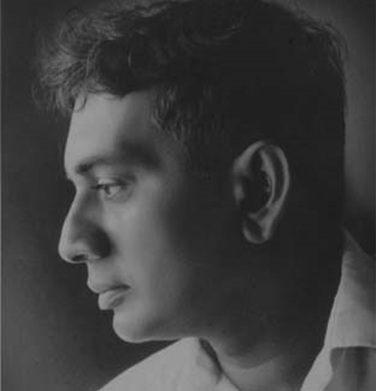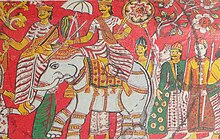Visual
arts have a long tradition in Sri Lanka, dating back to a century or two before
the common era. One of the most notable examples of early art are the Kandyan
era frescoes.
The
Kandy Empire was active 1469-1815 and promoted arts and Sri Lankan culture. This
was during a time when most of the people didn’t have any kind of formal
education and were illiterate. As Buddhism spread, monks painted these pictures
of Buddhist stories so that anyone could follow the stories. These fresco
paintings were complex, most notably marked with a variety of flower
decorations and people drawn to the side. What’s also impressive is that there
are over 40 shades of paint used in these frescoes using a number of different
natural-based paints and dyes. And these paintings can be seen in at least 36
different temples.
Outside
of that, Sri Lanka has also produced a number of other crafts. Woodcarving is
popular and is used to create figurines, tools, utensils, jewelry, boxes, toys,
etc. They also created wooden masks, which were generally tied to healing
rituals to fight again the devils (called yakkas) that they thought caused
disease.
They
also used a handloom to create different decorative textiles, garments, and
bags. The Portuguese and Dutch introduced lace making, also known as beeralu
lace, which they caught on and created their own intricate patterns. Batik dyed
cloth, which has its origins in Indonesia, is also popular in Sri Lanka. Coir
products, made from soaked coconut husks, are typically twisted and spun into a
rope-like material and coiled around to make mats and brooms.
Sri
Lanka is also known for their rustic clay pottery, which is still popular
today, despite being one of the most ancient traditions. Their lacquer ware,
called laksha, offers a way of bringing beautiful color to bowls, boxes, and
other works of pottery and woodcarving.
Storytelling
has been a part of Sri Lankan literature from its earliest days. Like other
ancient cultures, many of their early folk stories were told orally. However, of
their written works, most of it was written in Pali, Tamil, or Sinhala. After
the British arrived and up to current times, many writers write in English as
well as in Sinhala and Tamil, with Sinhala being the dominant language.
 |
| Mahagama Sekara |
Although
poetry, drama, and novels are found in Sri Lankan literature, short stories
seem to be the go-to style for many of these authors. And radio plays also seem
to be quite popular. In classical poetry, two poets who stand out are Gurulugomi (12th century)
and Thotagamuwe Sri Rahula Thera (15th
century). Other poets and writers who write in Sinhala include Mahagama Sekara (prominent in poetry
and literature), Gunadasa Amarasekara
(poet, writer, essayist), Parakrama
Kodituwakku (mid-20th century poet), Eric Illayapparachchi (writer, poet, lyricist), Lucien Bulathsinhala (playwright, poet,
writer), Chandraratna Bandara
(award-winning novelist), Munidasa
Kumaratunga (novelist, linguist, poet, pushed for Sinhala language over
Sanskrit), G. B. Senanayake (free
verse poetry), and Sybil Wettasinghe
(children’s literature and illustrator).
Two
authors who were known for writing poetry in Tamil include Eelattu Poothanthevanar and Neelaavanan.
One Sri Lankan-Canadian author is widely known: Michael Ondaatje’s The
English Patient received the Man Booker prize in 1992. Another Sri
Lankan-British author, Romesh Gunesekera,
also received the Booker prize for his novel Reef in 1994. There are several other award-winning novelists
living in Sri Lanka and abroad.
Up
next: music and dance






No comments:
Post a Comment